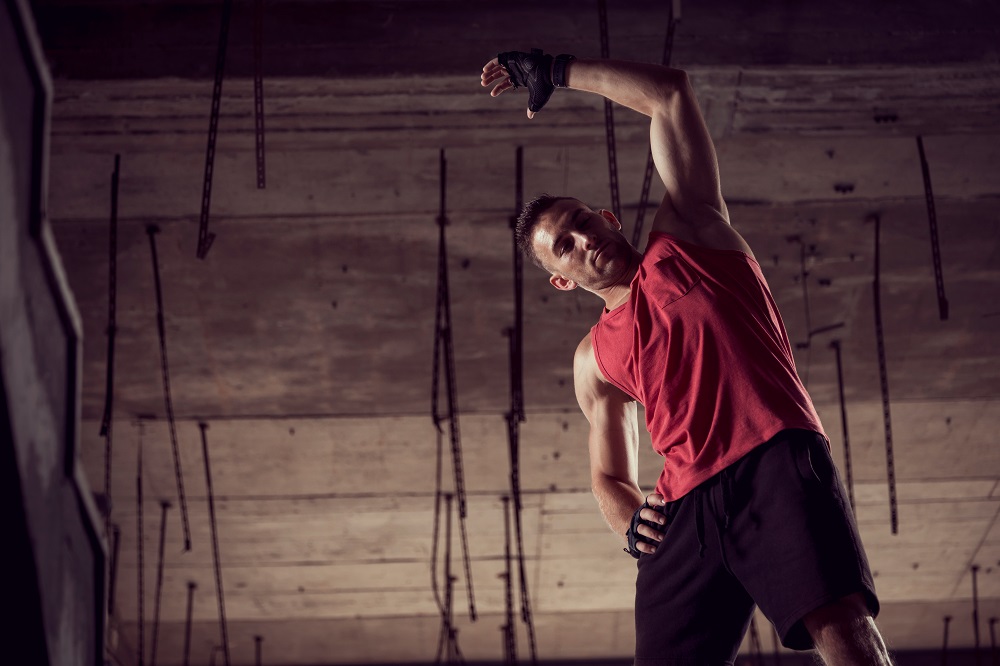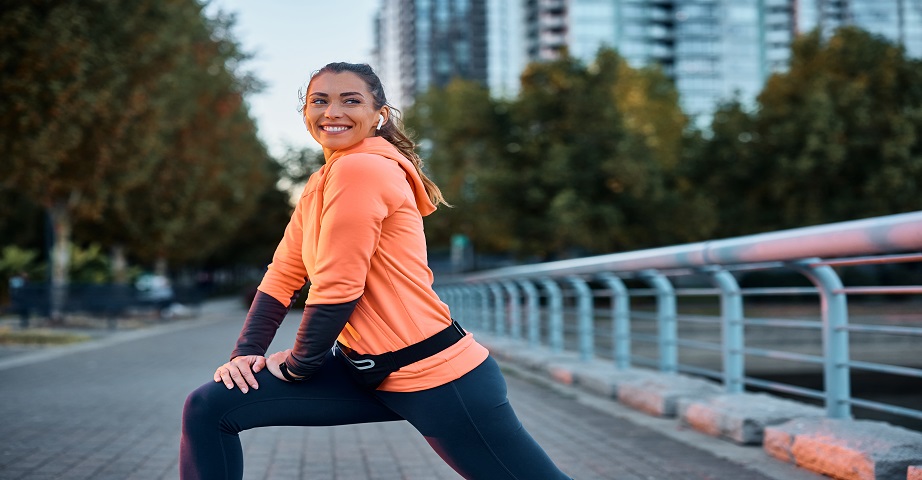Warm up before training - why is it important? How execute?

Warm up before training is an integral, key and necessary element of properly performed physical exercises. This is an important point of physical effort, which we often forget or approach without proper attention. However, skipping the warm up before exercise can lead to unpleasant and undesirable consequences.
Summary
Why pre-workout warming up is so important? How to perform the right warm up? What is the difference between warm up before strength training and warm up before running workout?
Why is pre-workout warming up so important?
A warm up before training is an extremely important part of exercise, which helps to properly prepare the body for physical exertion, and also reduces the risk of injury.
The warming exercises protect the musculoskeletal system, and also make the tendons and joints more flexible and susceptible to the exercises, in turn, the muscles work better and more efficiently, and what's more, they become more resistant to loads.
A good warm up before starting a workout can increase its effectiveness and reduce muscle soreness occurring after the end of activity. In addition, the warm up exercises improve coordination and focus, as well as allow raising body temperature, which is an important signal for the body that in a moment more effort awaits him.
Even a 10-minute warm up can increase body temperature by 2-3 degrees, which has a positive effect on the elasticity of muscles, joints and ligaments, reducing the risk of their damage. In addition, the proper warm up before training affects the acceleration of the respiratory system and contributes to the increase in the rate of transmission of nerve impulses, which in turn improves oxygen transport.
Advantages of warm up before training
The proper warm up before the start of intense exercise can:
- protect the movement system and increase the flexibility of muscles and joints and ligaments,
- promote increased ventilation of the lungs, and thus improve oxygen transport, which makes that the muscles are better oxygenated, and the risk of muscle soreness after proper training - is smaller,
- increase the rate of transmission of nerve impulses and improve the efficiency of the nervous system,
- intensify metabolic transformations,
- increase body temperature,
- increase blood flow and blood pressure,
- stimulate the body to act,
- improve coordination and focus,
- increase training opportunities.
What should a proper warm up look like?
The warm up, contrary to appearances, is not a universal set of exercises that fit into any type of physical exertion. It should be individually selected for the type of activity performed and the intensity of training, as well as the level of advancement of the exerciser, his age and condition. In addition, the length of the warm up should depend on the intensity of physical exertion - the more intense the exercises you intend to perform, the longer you should warm up the whole body.
First, it is needed to stimulate the muscles to work, and then stretch them. Later, it is worth doing aerobic exercises or crunches and jumping jack to raise body temperature, and then can turn on a gentle resistance or a slight load for a warm up.
Sometimes it may also be a good solution to perform the same exercises as during the basic training, but with fewer repetitions and less intensity and without any loads, which will ensure that you warm up just those muscle parts that you intend to strengthen during a given workout.
To warm up the muscles, you can perform general development exercises, such as.:
- wrist circles,
- arm circles,
- leg swings,
- body twists,
- run on the spot,
- jumping jack,
- lunges.
Recommended products
Warm up before training for beginners
The beginners often do not pay enough attention to a properly conducted warm up. It is worth remembering, that not only the lack of warm up can increase the risk of injury, but also improperly conducted exercises for warming up and too much exertion and intensity of performed activities.
Therefore, a short warm up among beginners should be based on light exercises, so as not to overtax the body, not accustomed to performing intense physical efforts.
A good warm up solution for beginners is a dynamic warm up, which is performed by footballers before the basic training. These are stretching exercises that are performed in motion, which allows great warming up of muscles and joints and ensures good preparation of the body for proper physical exercise.
What exercises to do during the warm up before training for beginners? Such as.:
- wrist circles,
- squats,
- dynamic bends,
- arm swings during jog.
Warm up before strength training
A warm up before strength training is extremely important. Regardless of which muscle group you intend to train during a given physical effort, it is worth warming up all muscle parts.
Well-heated muscles and joints are the basis to reduce the risk of injury and muscle soreness, which is why during the warming up exercises before strength training, it is worth increasing body temperature by at least two degrees.
In the first instance, the warm up before strength training should take into account circulation and general development activity, with particular emphasis on the joints that you intend to exercise during a given effort. Then it is worth performing, among others, leg and hand swings, arm circles, neck and body circles, squats and jumping joint exercises. Then it is worth including aerobic exercises in the warm up to improve blood circulation in the body. It is worth doing, for example, a jog on a treadmill or exercises on an elliptical trainer. Another point of warm up is static stretching of muscles and ligaments, and further - multi-joint exercises with a small load.

Warm up before leg training
A warm up before running or training the legs, should consist of two parts. First of all, a series of preliminary activities taking into account multi-joint exercises, and then it should focus on warming up the muscles that will perform the greatest effort during training, in this case on the legs.
To maintain running strength and reduce the risk of injury, in the case of runners and among beginners, it is recommended to perform dynamic warm up, that is, exercises in motion.
What is an example of the warm up before running? Leg training should start with warming up exercises, such as.:
- body bends,
- body twists,
- hips circles,
- knees circles,
- skip A,
- skip C,
- lunges,
- leg calf raise,
- legs swings.
Warm up before training at home - exemplary warming up exercises
A training performed at home is most often a strength effort performed using the weight of your own body or using other loads, such as weight bar or dumbbells.
Like other types of warm up, the warm up exercises before activity at home should prepare the body for exercise and take into account both general exercises and special activities, focusing on the specific muscle part that you intend to train during a given effort.
What should the warm up look like before training at home? When training at home, it is worth starting the activity with warming up exercises, such as.:
- arms circles,
- arms swings,
- hips circles,
- legs swings,
- run on the spot,
- jumping jack,
- skip A.
When to do stretching exercises?
Stretching exercises, or stretching, are usually recommended as an element at the end of training.
They enable oxygenation of muscles after physical exercise and promote the improvement of circulation, and this has a positive effect on muscle regeneration. In addition, the stretching exercises allow the body to "breathe again" and return to the state before the start of activity - they balance the heart rate and body temperature and the breath of the athlete.

